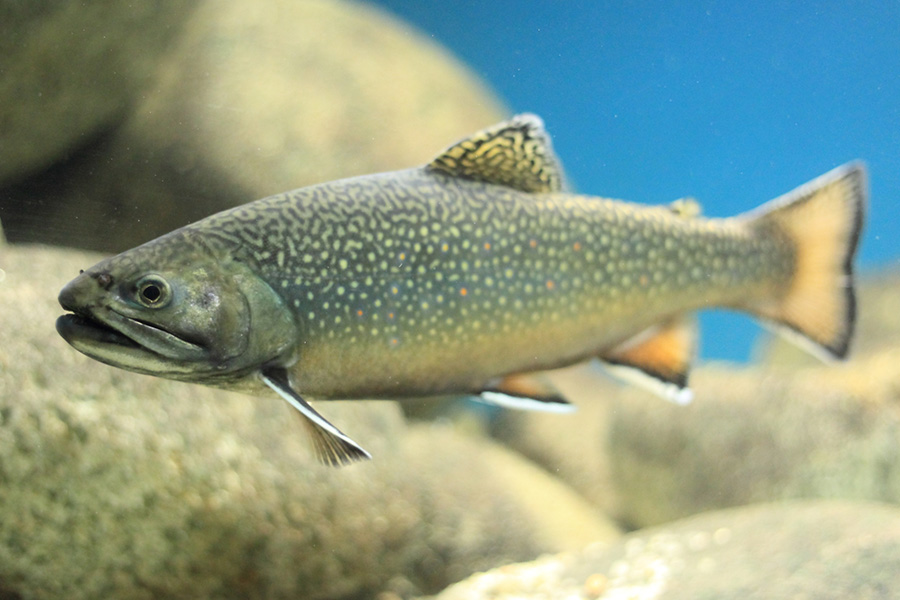
Habitat
In our home state of South Carolina, the brook trout is typically found in clear, cool, fast-flowing mountain streams, smaller rivers and lakes.
Aquarium Location
Mountain Forest
Fun Facts
- Brook trout rarely live past age five and during their first year they have a high risk of being eaten, dying from disease or starvation.
- Brook that move from ocean to freshwater to spawn are called sea-run trout, salters, or coasters.
- One of the least competitive species of freshwater fishes, which means they often lose their place to other fish competing for the same food.
Diet
Very young brook trout feed mostly on aquatic insect larvae (caddisflies, midges, and black flies). Adult trout will eat anything that fits in their mouth including aquatic insect larvae, mayflies, worms, leaches and smaller fish.
Cool Adaptation
Brook trout have elongated, streamlined bodies and powerful tails that allow them to swim about or upstream in fast moving rivers. Their bodies are also covered with small cycloid scales, which are thin, overlapping scales that allow for more flexibility and make their bodies feel slick or slippery. Trout bodies are so well adapted for living in rushing currents that these fish can hover in the rushing current, waiting for food to flow to them.
Conservation Connection
Brook trout were once very common in the northern U.S., southern Canada and the Appalachian region. Today there are far fewer brook trout due to the construction of dams (which negatively affects spawning) and logging in wooded areas surrounding freshwater rivers (which affects the water quality). Rainbow trout and brown trout have been introduced to streams, rivers and lakes and have out competed the brook trout for food, which reduced populations. Brook trout is not currently receiving federal or international protection, but there are many extensive conservation efforts directed towards this species at the state and local level, especially where naturally reproducing brook trout populations occur. In South Carolina the brook trout is listed as a ‘Species of Special Concern,’ as populations only occur in a very small western portion of the state.


